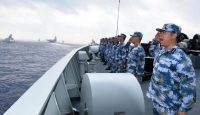
The Looming Crisis in the South China Sea
As China increasingly threatens to use force against Taiwan, the United States is rightly focused on the dangers of conflict over the island. But there is an equal risk of crisis, confrontation, and even war over a different area—the South China Sea. China is aggressively pursuing its claims throughout the sea, through which over $3 trillion in trade flows each year. Over the last decade, Beijing has built military bases on a series of reclaimed islands and harassed other countries that claim rights in the sea. Most recently, it has raised the risk of disaster by unsafely intercepting ships and aircraft belonging to the United States and its allies.… Seguir leyendo »















